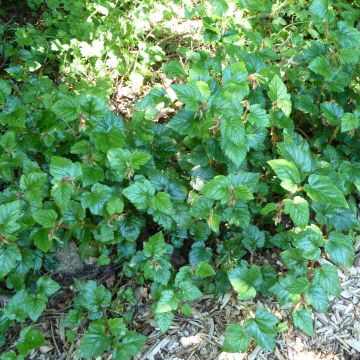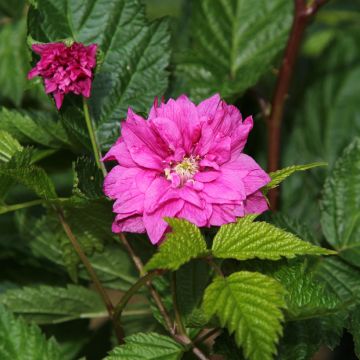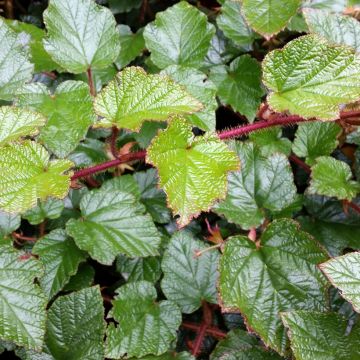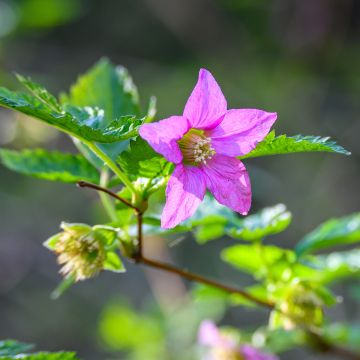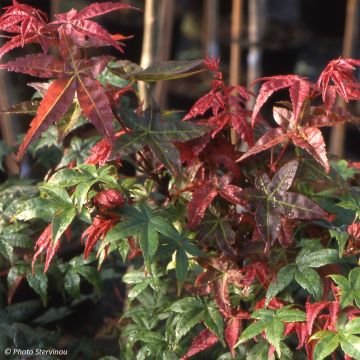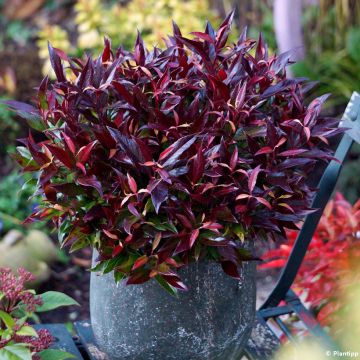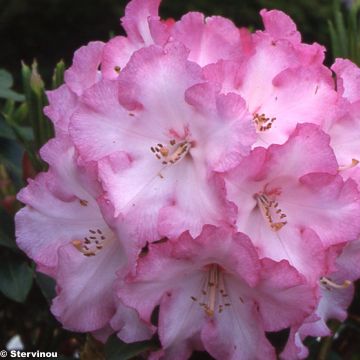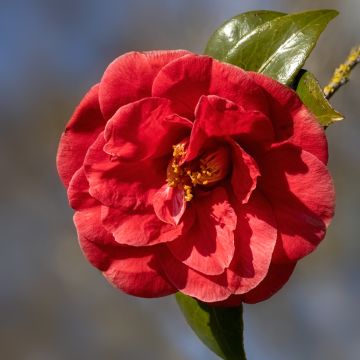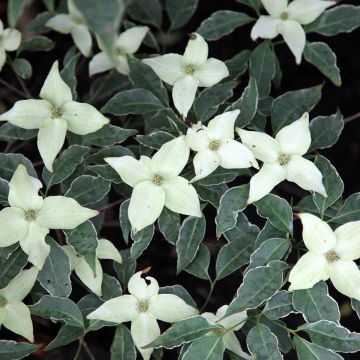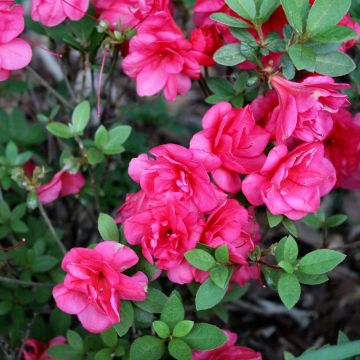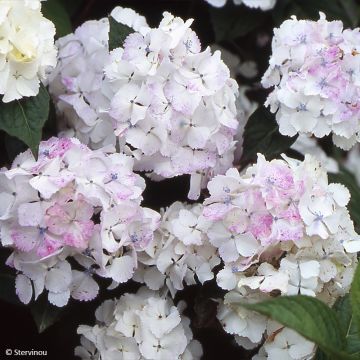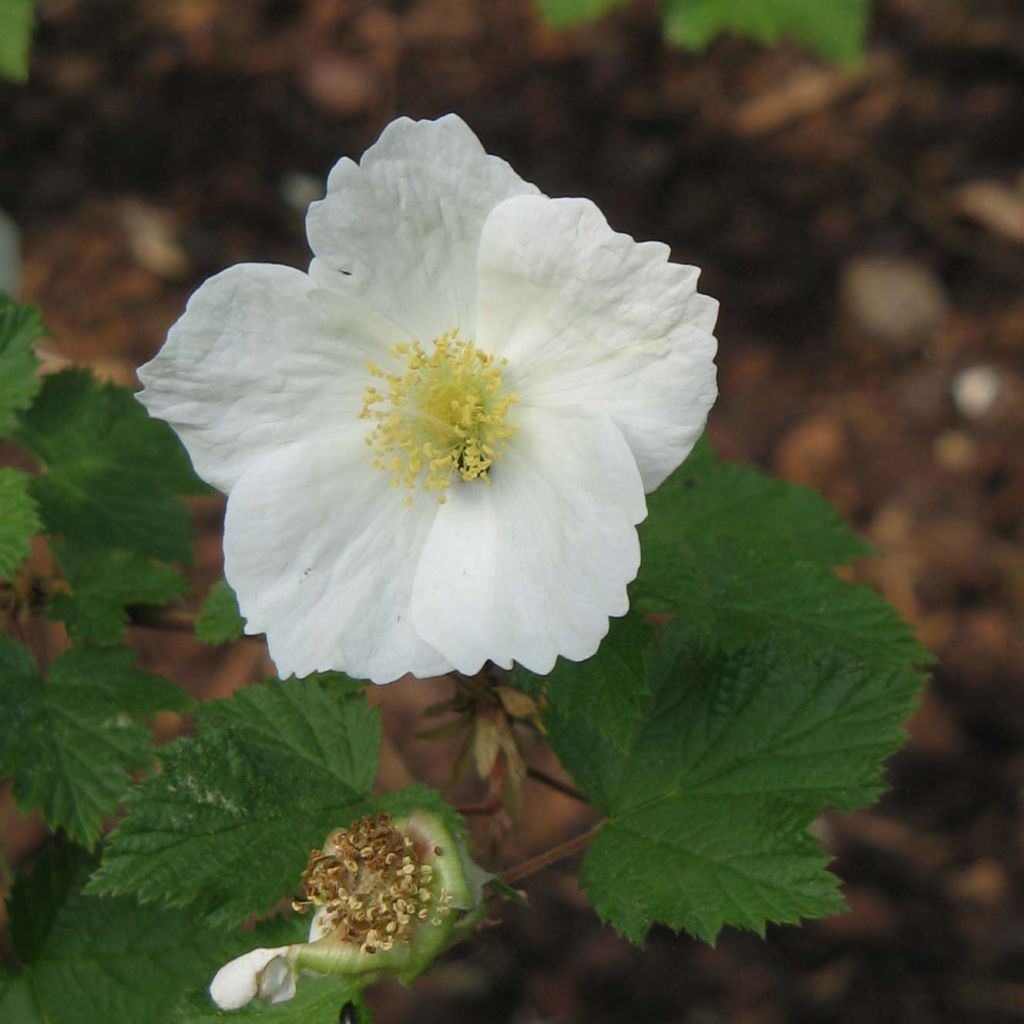

Rubus tridel Benenden
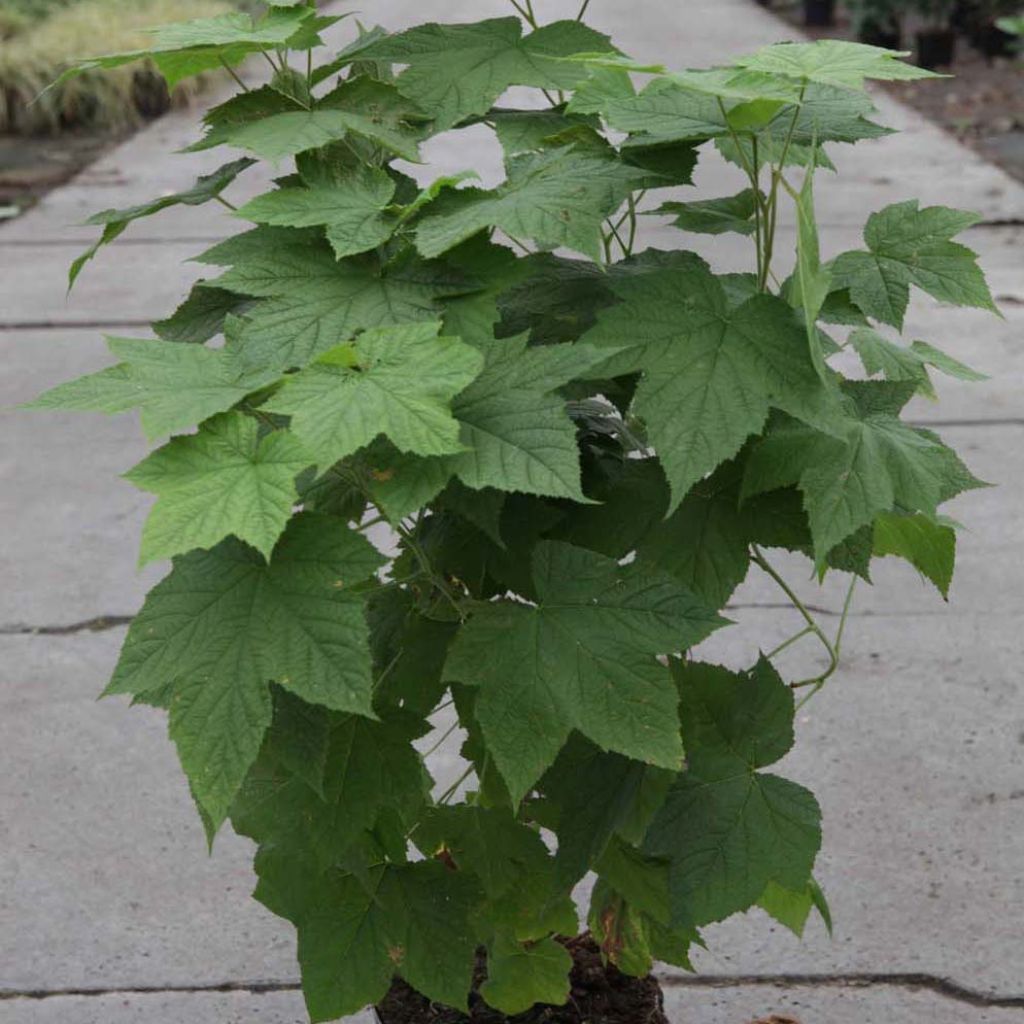

Rubus tridel Benenden
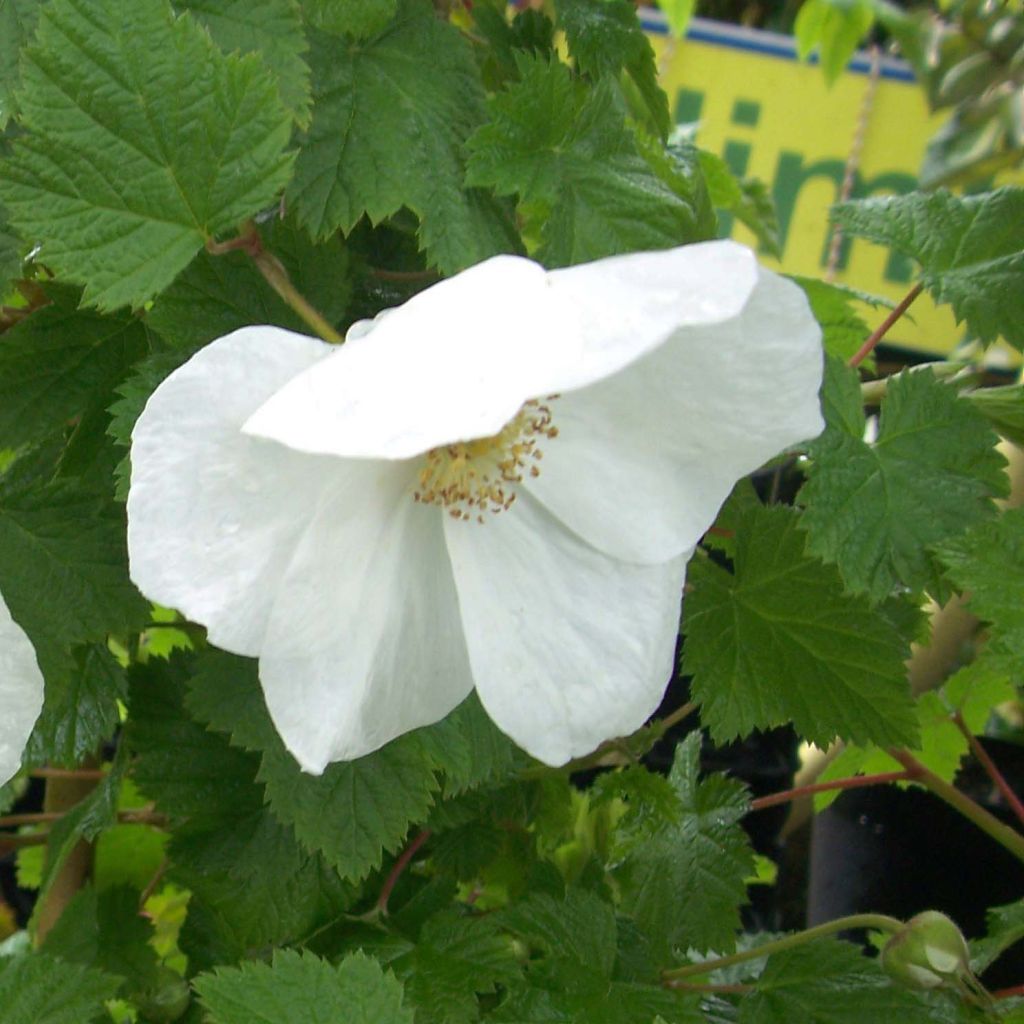

Rubus tridel Benenden
Rubus tridel Benenden
Rubus tridel Benenden
Tridel Berry
This item cannot be shipped to the selected country
Delivery charge from €5.90
Delivery to Corse prohibited
More information
Schedule delivery date,
and select date in basket
This plant carries a 24 months recovery warranty
More information
We guarantee the quality of our plants for a full growing cycle, and will replace at our expense any plant that fails to recover under normal climatic and planting conditions.
From €5.90 for pickup delivery and €6.90 for home delivery
Express home delivery from €8.90.
Delivery to Corse prohibited: UE law prohibits the import of this plant from mainland France to Corse as part of the fight against Xylella fastidiosa. Please accept our sincere apologies.
More information

Does this plant fit my garden?
Set up your Plantfit profile →
Description
Rubus tridel 'Benenden' is a charming ornamental bush to be adopted in a natural garden or in a country hedge in the company of wild roses, white spireas or guelder roses for example. Unlike the wild blackberry, this one has a well-behaved bushy habit, does not produce fruits and develops thorn-free stems. Gracefully drooping, its stems bear in late spring or early summer large slightly fragrant white flowers distributed along their entire length. Its pretty deciduous foliage is composed of wavy, dissected and toothed leaves, of a beautiful dark green. Hardy and not very demanding in terms of soil, requiring very little maintenance, this plant is within reach of all gardeners, even beginners.
The 'Benenden' Bramble, discovered in 1950 in England, belongs to the rose family. It is a spontaneous and sterile hybrid between the Rubus deliciosus, native to the central United States and the Rubus trilobus, native to Guatemala as well as the centre and south of Mexico. The Royal Horticultural Society has awarded this lovely bramble an Award of Garden Merit for its ornamental qualities and its performance in the garden. The plant closely resembles its first American parent, but it has no thorns and offers much larger and more regular wild rose flowers, reaching 5 to 7cm (2 - 2.8in) in diameter. It is still little known here, despite its adaptability to many growing conditions. One plant will form a large bush that will occupy a space of 2.5m (8ft) in all directions. The upright and then drooping thornless stems tend to exfoliate with age. They bear deciduous leaves of variable shape, more or less lobed and toothed. The lamina has a wavy appearance and sports a beautiful deep green colour that enhances the large sparkling white flowers with yellow stamens. Flowering takes place in May-June, on the previous year's branches. A pruning done just after the first flowering will encourage a second bloom in late summer.
Plant the 'Benenden' Ornamental Bramble preferably in partial shade, in ordinary but deep soil. Under these conditions, the bush will settle very easily and in a few years will become a very ornamental plant in a country setting or a natural garden. In an informal hedge or in a large shrub bed, associate this bramble with other unpretentious plants such as white spireas, elderberries, guelder roses, lilacs or deciduous Euonymus. It can also be used to form a large ground cover, it will decorate a wild corner like a semi-shaded slope with carpets of periwinkles, a Polygonum, creeping bugles, all of which are vigorous plants that are also undemanding. It can also be trained on a fence grid for example.
Report an error about the product description
Rubus tridel Benenden in pictures
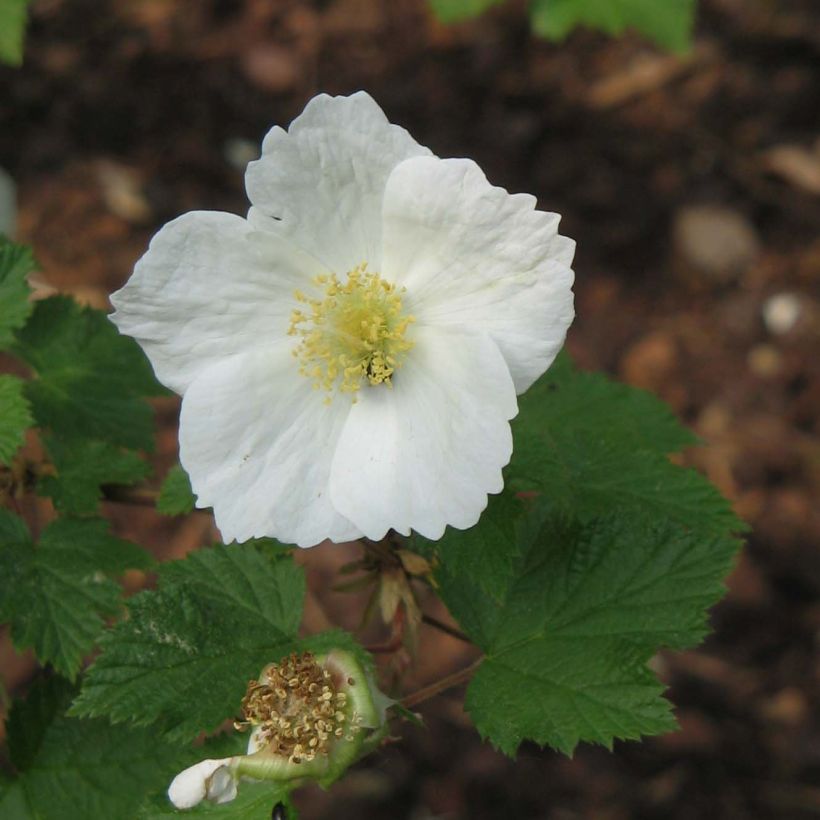

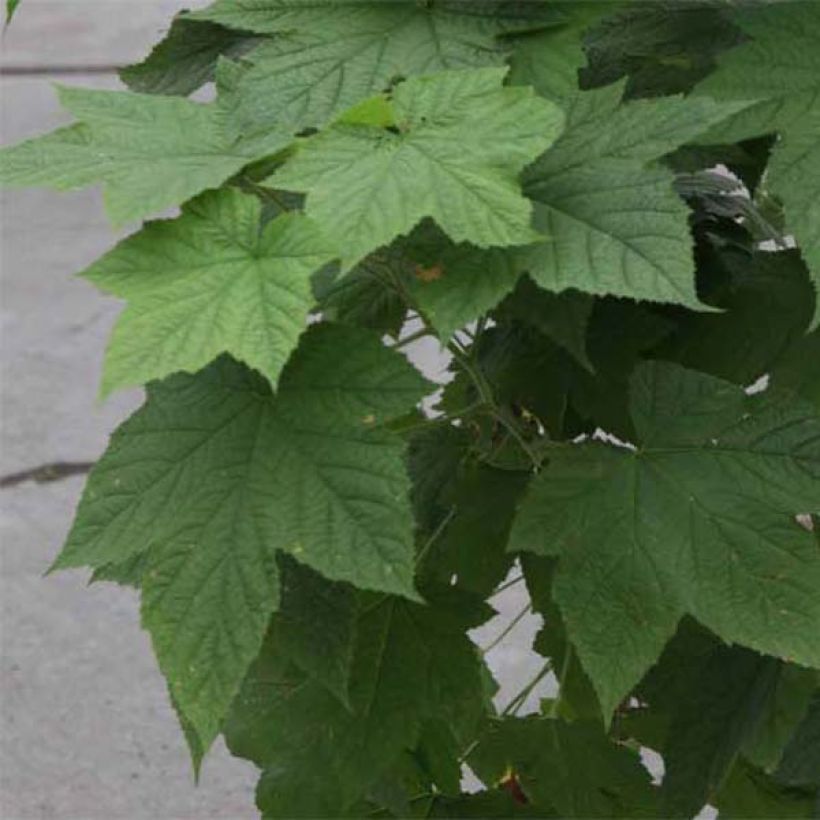

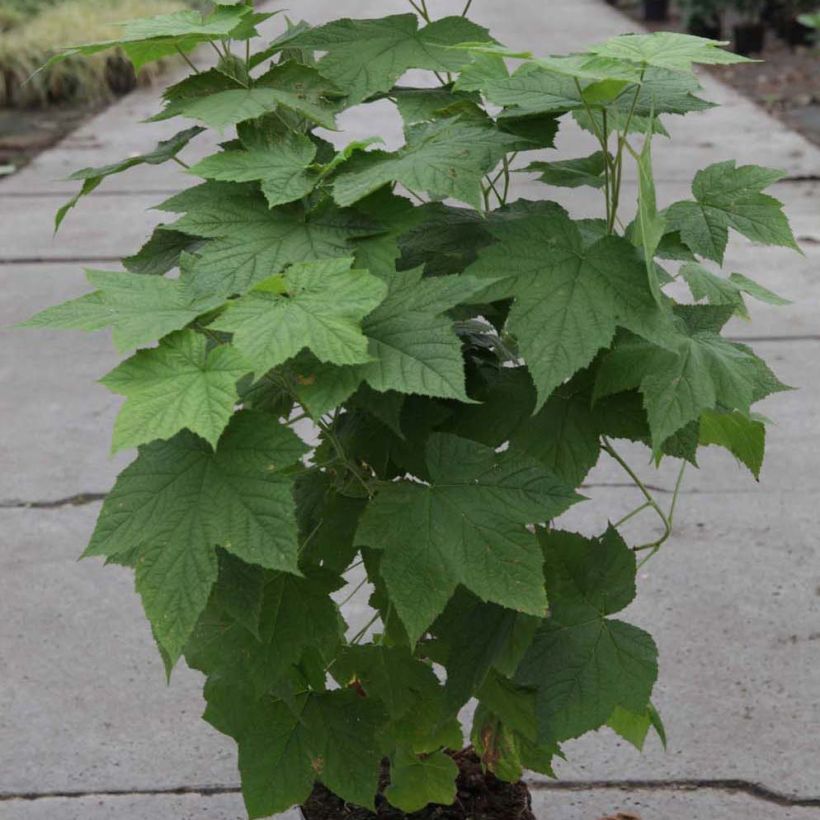

Plant habit
Flowering
Foliage
Botanical data
Rubus
tridel
Benenden
Rosaceae
Tridel Berry
Cultivar or hybrid
Other Rubus - Blackberry
Planting and care
Plant the 'Benenden' Ornamental Bramble in spring or autumn, in any soil that is sufficiently deep and fertile, but properly drained. If necessary, enrich the soil with well-decomposed compost and coarse sand. Simply avoid excessive limestone or acidity, as this plant prefers a relatively neutral substrate. Once established, the bush tolerates a certain amount of summer drought if the soil it is planted in is sufficiently deep. It will thrive in partial shade or in the sun, but in a non-scorching exposure. This sterile bramble can be pruned immediately after flowering. This encourages a second flowering at the end of summer.
Planting period
Intended location
Care
This item has not been reviewed yet - be the first to leave a review about it.
Shrubs for semi-shade
Haven't found what you were looking for?
Hardiness is the lowest winter temperature a plant can endure without suffering serious damage or even dying. However, hardiness is affected by location (a sheltered area, such as a patio), protection (winter cover) and soil type (hardiness is improved by well-drained soil).

Photo Sharing Terms & Conditions
In order to encourage gardeners to interact and share their experiences, Promesse de fleurs offers various media enabling content to be uploaded onto its Site - in particular via the ‘Photo sharing’ module.
The User agrees to refrain from:
- Posting any content that is illegal, prejudicial, insulting, racist, inciteful to hatred, revisionist, contrary to public decency, that infringes on privacy or on the privacy rights of third parties, in particular the publicity rights of persons and goods, intellectual property rights, or the right to privacy.
- Submitting content on behalf of a third party;
- Impersonate the identity of a third party and/or publish any personal information about a third party;
In general, the User undertakes to refrain from any unethical behaviour.
All Content (in particular text, comments, files, images, photos, videos, creative works, etc.), which may be subject to property or intellectual property rights, image or other private rights, shall remain the property of the User, subject to the limited rights granted by the terms of the licence granted by Promesse de fleurs as stated below. Users are at liberty to publish or not to publish such Content on the Site, notably via the ‘Photo Sharing’ facility, and accept that this Content shall be made public and freely accessible, notably on the Internet.
Users further acknowledge, undertake to have ,and guarantee that they hold all necessary rights and permissions to publish such material on the Site, in particular with regard to the legislation in force pertaining to any privacy, property, intellectual property, image, or contractual rights, or rights of any other nature. By publishing such Content on the Site, Users acknowledge accepting full liability as publishers of the Content within the meaning of the law, and grant Promesse de fleurs, free of charge, an inclusive, worldwide licence for the said Content for the entire duration of its publication, including all reproduction, representation, up/downloading, displaying, performing, transmission, and storage rights.
Users also grant permission for their name to be linked to the Content and accept that this link may not always be made available.
By engaging in posting material, Users consent to their Content becoming automatically accessible on the Internet, in particular on other sites and/or blogs and/or web pages of the Promesse de fleurs site, including in particular social pages and the Promesse de fleurs catalogue.
Users may secure the removal of entrusted content free of charge by issuing a simple request via our contact form.
The flowering period indicated on our website applies to countries and regions located in USDA zone 8 (France, the United Kingdom, Ireland, the Netherlands, etc.)
It will vary according to where you live:
- In zones 9 to 10 (Italy, Spain, Greece, etc.), flowering will occur about 2 to 4 weeks earlier.
- In zones 6 to 7 (Germany, Poland, Slovenia, and lower mountainous regions), flowering will be delayed by 2 to 3 weeks.
- In zone 5 (Central Europe, Scandinavia), blooming will be delayed by 3 to 5 weeks.
In temperate climates, pruning of spring-flowering shrubs (forsythia, spireas, etc.) should be done just after flowering.
Pruning of summer-flowering shrubs (Indian Lilac, Perovskia, etc.) can be done in winter or spring.
In cold regions as well as with frost-sensitive plants, avoid pruning too early when severe frosts may still occur.
The planting period indicated on our website applies to countries and regions located in USDA zone 8 (France, United Kingdom, Ireland, Netherlands).
It will vary according to where you live:
- In Mediterranean zones (Marseille, Madrid, Milan, etc.), autumn and winter are the best planting periods.
- In continental zones (Strasbourg, Munich, Vienna, etc.), delay planting by 2 to 3 weeks in spring and bring it forward by 2 to 4 weeks in autumn.
- In mountainous regions (the Alps, Pyrenees, Carpathians, etc.), it is best to plant in late spring (May-June) or late summer (August-September).
The harvesting period indicated on our website applies to countries and regions in USDA zone 8 (France, England, Ireland, the Netherlands).
In colder areas (Scandinavia, Poland, Austria...) fruit and vegetable harvests are likely to be delayed by 3-4 weeks.
In warmer areas (Italy, Spain, Greece, etc.), harvesting will probably take place earlier, depending on weather conditions.
The sowing periods indicated on our website apply to countries and regions within USDA Zone 8 (France, UK, Ireland, Netherlands).
In colder areas (Scandinavia, Poland, Austria...), delay any outdoor sowing by 3-4 weeks, or sow under glass.
In warmer climes (Italy, Spain, Greece, etc.), bring outdoor sowing forward by a few weeks.

































